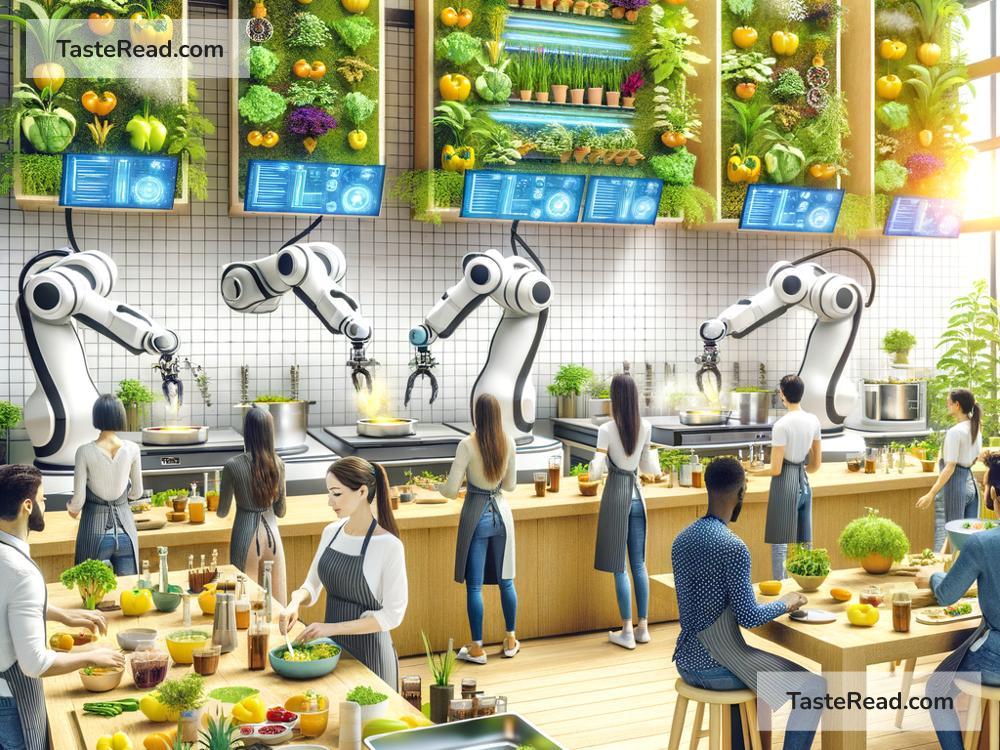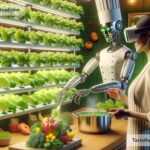The Future of Food and Collaborative Networks: A Shared Vision for a Better World
In the world we live in today, food is a central part of life. It connects people, brings joy, and keeps us healthy. But as the global population grows and environmental challenges become more serious, we need to rethink how we produce, share, and consume food. The future of food isn’t just about finding new ways to grow crops or inventing high-tech solutions—it’s also about working together through collaborative networks to create better systems and healthier communities.
The Challenges We Face
Feeding the planet in the future could become more difficult. By 2050, the world’s population is expected to reach nearly 10 billion. Feeding that many people will require thoughtful solutions. At the same time, we must deal with environmental issues such as climate change, soil degradation, water shortages, and the loss of biodiversity. Traditional farming methods won’t be enough if we want to meet these challenges while protecting the health of our planet.
Additionally, hunger and food inequality remain persistent problems. Millions of people globally don’t have access to nutritious food, while others waste large amounts of food. Clearly, we need a system that is both sustainable and fair.
Innovative Solutions in Food Production
The future of food will be shaped by innovation. Scientists, farmers, and entrepreneurs already are exploring exciting technologies that could transform how we grow and consume food. Here are a few examples:
-
Alternative Proteins
Foods like plant-based meat and lab-grown meat are becoming more popular. These alternatives require fewer resources to produce than traditional livestock farming, which is a major contributor to greenhouse gas emissions. Products like Beyond Meat or cultivated meat from companies like Upside Foods aim to provide protein without harming the environment. -
Precision Agriculture
Precision agriculture uses data, sensors, and AI to help farmers optimize their resources. By analyzing soil health, weather patterns, and crop conditions, farmers can grow food more efficiently while reducing waste. Drones, GPS tools, and robotics are already being used to monitor crops and automate farming tasks. -
Vertical Farming
Vertical farming—growing crops in stacked layers or in controlled indoor environments—allows food to be produced closer to city centers. It uses less land and water than traditional farming and can be done year-round. This innovative method helps reduce transportation costs and ensures fresher produce. -
Food Recycling and Upcycling
To combat food waste, companies are finding ways to turn discarded food into valuable products. For example, fruit peels might be used to make snacks, or leftover grains from brewing beer could be turned into flour. These ideas not only reduce waste but also create new sources of nutrition.
Working Together Through Collaborative Networks
Innovation alone isn’t enough to tackle the challenges of feeding the world. We need people to work together—governments, businesses, farmers, scientists, and consumers all play a role in creating a better food system. Collaborative networks are key to making this happen.
At its core, collaboration means sharing knowledge, resources, and ideas to solve common problems. Here are some ways collaborative networks can shape the future of food:
-
Local Food Systems
Communities can build local food networks to reduce reliance on global supply chains. Farmer’s markets, community-supported agriculture (CSA), and urban gardening programs bring food production closer to consumers. This helps strengthen local economies and reduce the environmental impact of transporting food long distances. -
Global Partnerships
Partnerships between countries, organizations, and private industries can help share technology and expertise. For example, drought-resistant crop varieties developed in one region might help farmers in another region facing similar climate challenges. Collaborative efforts like the “Food and Agriculture Organization” (FAO) work to address hunger worldwide by sharing tools, funding, and solutions. -
Open Data Sharing
Farmers and researchers can benefit from shared access to important data, such as information about crop diseases, weather forecasts, and best farming practices. Open-source platforms or apps could connect food producers across the globe, making farming smarter and more efficient. -
Consumer Engagement
Consumers have a powerful role in driving change. By joining community food programs, supporting sustainable brands, or actively reducing food waste at home, individuals can contribute to a healthier food system. Social media campaigns and education programs can spark collective action and spread awareness about responsible choices.
A Vision for the Future
Imagine a world where every person has access to nutritious food grown sustainably. Farms are powered by clean energy, and cities have lush vertical gardens. Technology helps farmers make smart decisions, while local communities come together to share resources and enjoy fresh food. Waste is minimized, and collaboration becomes the norm.
This vision isn’t just a dream—it’s a possibility if we work together. To make changes that benefit everyone, we need governments to support sustainable practices, businesses to invest in innovation, and individuals to adopt mindful habits. Collaborative networks help build trust and cooperation, which will ultimately lead to a brighter future for food.
Conclusion
The future of food is about more than just what we eat—it’s about how we grow, share, and connect through food. By embracing innovation and working together, we can address challenges like climate change, food inequality, and waste. Collaborative networks are the key to unlocking sustainable solutions that benefit both people and the planet.
Food is a shared experience, and solving food-related issues should be too. It’s time for us to come together, build partnerships, and create a future where food is abundant, fair, and kind to the Earth. This vision isn’t just possible—it’s essential for the health of our world.

